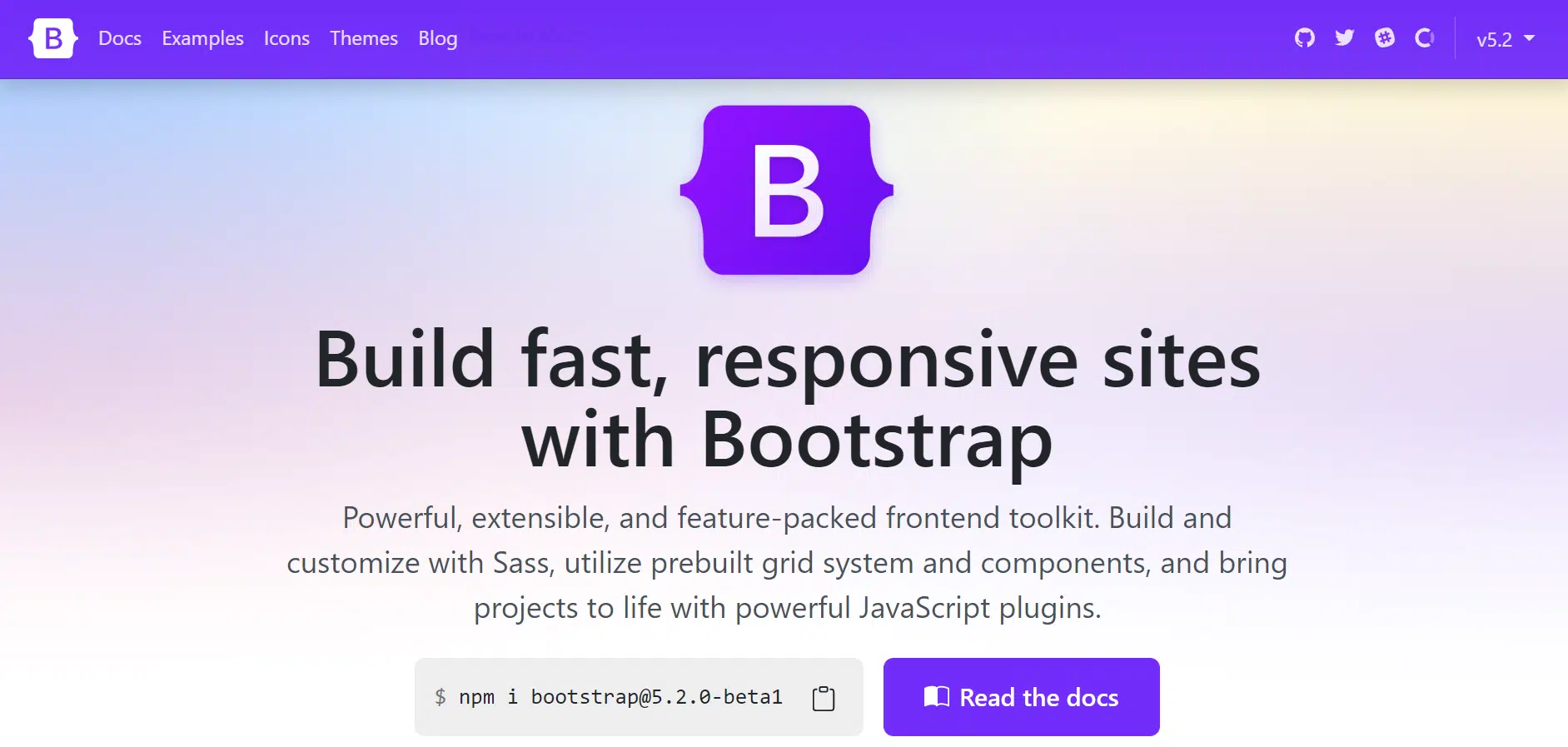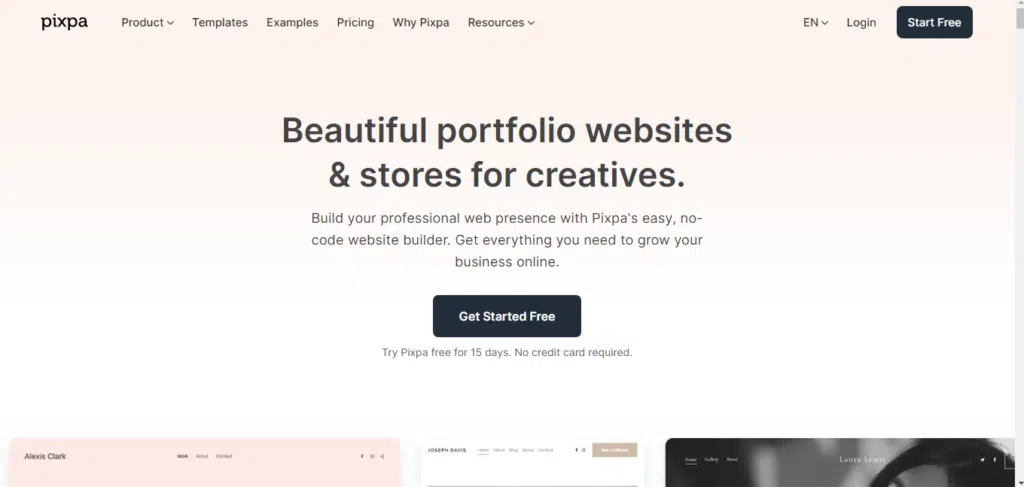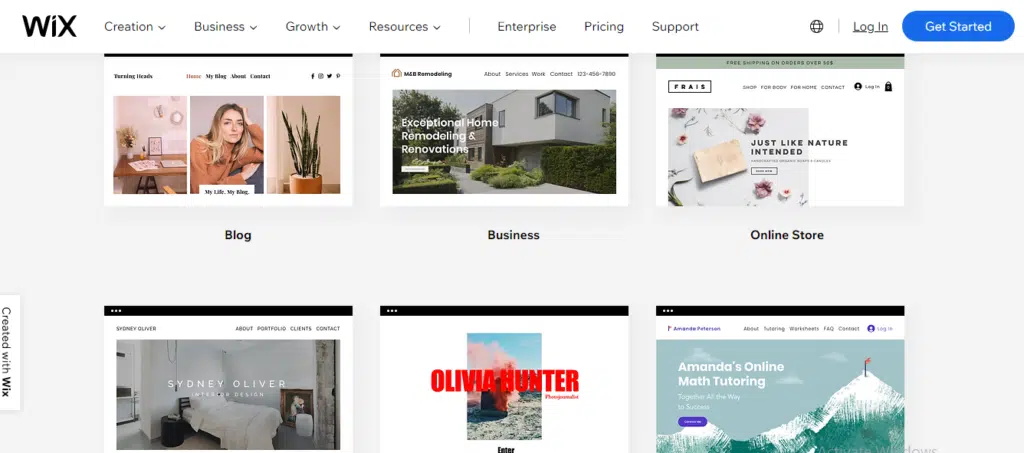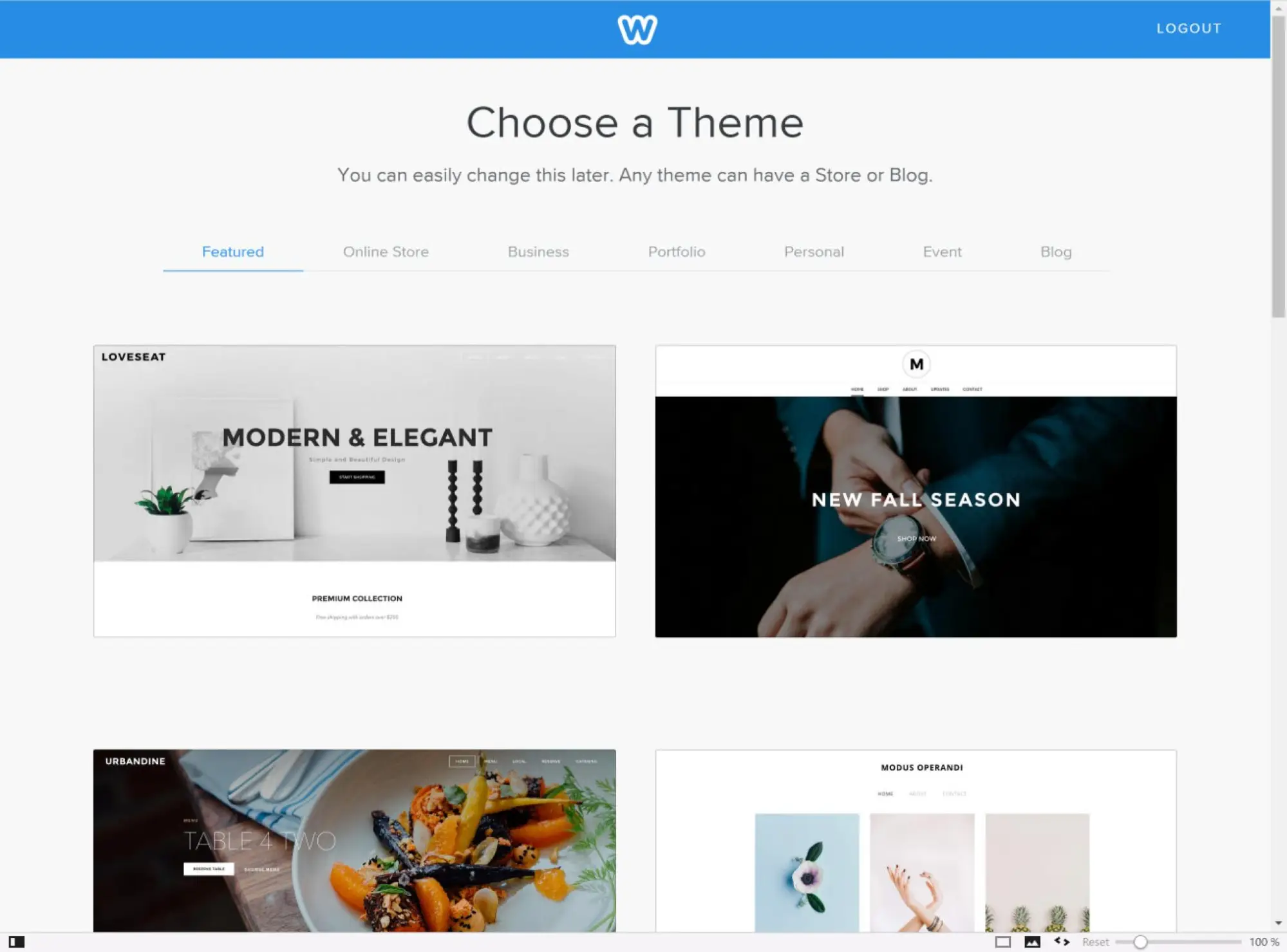Whether you’re a seasoned or aspiring web developer, a business owner, or are just someone’s nephew who’s been dumped with doing the website designing; there’s a web design builder software option out there that will cater to your needs and abilities so you’ll be able to create the perfect website.
It’s never been easier to set up an appealing, professional-looking website. The best web design software tools offer a user-friendly interface with drag-and-drop functionality, making it incredibly easy to build your website.

You probably don’t have to be told, but creating an aesthetically pleasing, elegant, and appealing website is absolutely vital because you only get one first impression. Your website will determine how a customer perceives your brand, which leads them to their next move; to stay, or to go.
With 94% of first impressions being design related, it definitely pays to use the best website design software. This is key to customer retention and keeping your leads from leaving.
10 Best Website Builder Software in 2024
- Squarespace — Best professional web design software
- Wix — Best web design software with AI-guided design assistant
- WebFlow — Best software with powerful visual designer
- WordPress — Best well-supported web design software
- Adobe Dreamweaver – Get 65% off — Best software with pre-programmed web components
- Weebly — Best SEO- friendly web design software
- Paperform— Best software with advanced customization
- Bootstrap — Best web design software with extensive features
- Pixpa — Best software with original app gallery
- Figma — The best versatile web builder tool for team collaboration
Let’s explore these website builders below…
Should I be using web design builder software?
Think of a website builder as buying boxed cake mix. It provides the elements such as flour (HTML) and icing sugar (hosting) that you need to make a cake (website). There are a few limitations, however, it saves a lot of time and effort over buying ingredients from scratch.
Website builders provide convenience, speed, easy maintenance and can be used by newbies or seasoned web designers in designing and developing websites. If you have the budget for the monthly fees and value convenience of use, then a web design software tool is a great option.
9 Best Web Design Software in 2024
1. Squarespace
Image source: mashable.com
Best professional web design software.
Overview
Squarespace has been around for over 15 years now. It fills a gap in the market for slick, modern, professional-looking websites, without any coding knowledge or overly complicated systems.
Taking on a minimalist design, the interface is quite simple and their templates and themes have a common sophisticated, clean look; large pictures, bold typography and features plenty of white space. At times, this could be a downfall, for example, some of the icons can feel hidden. However, it is a nice change from other web design software tools which are too busy and can leave you overwhelmed.
Price
Prices range from $12 to $40 per month (annual billing)
Pros
- Squarespace has a great WYSIWYG editor that allows you to see the changes you are making directly on the website, as you’re making them
- Mobile editing is enabled to make changes or post blogs on the move. You can also make changes offline and sync them to your live site when you have a connection again
- There is a long list of features for example, categories, RSS, markdown and customizable URLs
- It has Google docs and Mailchimp integrations
- You can syndicate a podcast, a feature that only Squarespace offers out of all web design software options on the market
- You can automate your email campaigns for example, shipping confirmation
Cons
- A limited number of templates and no access to third party plugins
- No AI or drag and drop builders
- No free version
- To change font sizes in styles, you have to click the gear button which can be hard to find
- You can’t swap between templates once you have selected one
- By default, it does not store submissions
2. Wix Website Software
Image source: wix.com
Best web design software with AI-guided design assistant.
Overview
Wix is one of the most used web design tools in the world, boasting over 150 million users. It is perfect for those users who have very little web design experience but still want a slick looking site. Its template editor is one of the most intuitive out there and has a range of ready-to-use layouts for many different industries.
Wix has a unique feature called repeaters which is not included with other website design software options. It is a list of items that have different content, but the same design and layout. You are able to customize the content of each individual item including modifying the background, text and images. This could be useful for displaying things like different product categories, stores or staff members.
Price
Free + Paid (paid plans from $11 per month)
Pros
- AI guided design assistant helps you to build a range of web pages and features
- Simple user interface
- Good selection of pre-made, professional-looking templates
- Ability to add animations and effects — something which few builders allow
- Has automatic site backup meaning your website can be restored at any time, meaning you will never lose important information
- Includes an unstructured editor so you can drag and drop anything anywhere on the page, whereas most website builders allow you to move things only into rows and columns
- It has scroll effects, where you can add dimension to your site with parallax, reveal, zoom-in or fade-in scrolling
Cons
- Wix can be more expensive than other comparable products
- Once you have chosen your preferred template, you cannot switch to a new one. If you want a new look you’ll have to build the site from the ground up again
- The number of plugins and additional functionality is limited compared to other platforms
- If you need specialist support with your site, many professional web designers do not like working with Wix
3. Webflow
Image source: forbes.com
Best software with a powerful visual designer.
Overview
A comprehensive website builder with a mass of features. Webflow markets itself as a better alternative to WordPress. Webflow is the first to provide front-end coding, without actually having to code.
In terms of simplicity of use, it is a little bit more complicated to use and can take some time to wrap your head around its features. This is because to use Webflow, you need to have some idea and understanding of web design (perhaps this calls for a quick YouTube tutorial). If you know about box models, style hierarchy and absolute and relative positions, you won’t have a problem navigating this tool. Web developers might also notice that the style panel closely resembles CSS rules.
Webflow differs from competitors in the web design software market because they don’t start you out with a template. This gives you more freedom and fewer constraints. However, it also means you need to have your head around the fundamentals of web design.
Using Webflow’s designer, you get the full power of CSS, HTML, and JavaScript. However, you generate your code using the visual designer instead of writing code line by line.
Webflow is a website builder that helps create professional design content for the web. Using the Webflow designer, you can get the full power of CSS, HTML, and JavaScript. Webflow promises site pages that can load up in milliseconds.
Price
Free + Paid (paid version starts at $12 per month)
Pros
- Webflow has a powerful visual designer that lets you create beautiful sites without having to write any code yourself
- Hundreds of responsive, customizable templates suitable for any industry
- Advanced interactions with Javascript
- Fully featured content management system for website building without templates
- Good SEO features for ranking and keyword optimization
- Much more freedom in design than other website builders
- Includes an editor interface, proving very useful for teams or clients as they can browse the site and change elements
Cons
- It can be a daunting platform for beginners even though there is no technical coding knowledge required
- Having said that, you do need to have a fundamental understanding of web design to effectively use Webflow
- The pricing structure is a little complicated to understand and a fully functioning website on Webflow can be quite expensive. This article by Satori Studio has a good explanation of the Webflow pricing
- Poor technical support – no live chat or phone support
4. WordPress CMS
Image source: wpengine.com
Best well-supported web design software.
Overview
WordPress is the most popular and well-supported platform in the world. With an astounding 36% of all websites being built using WordPress, it’s hard to deny its popularity in creating beautiful designs while having a simple and streamlined interface.
You can check out the wordpress themes for your websites from one of the highly customizable site- Astra.
Unlike most other web design software tools, WordPress does not feature a drag and drop interface. It does, however, offer a range of themes including themes from third party sites such as Themeforest.
Its huge range of third-party integrations, plugins and templates make it suitable for any type of website you have in mind.
It is popular software. It is relatively easy to use. You can go in for this software whether you are building your first page or has been in the web development space before. This is the best choice for web site builder.
Price
Free + Paid (paid version starts at $4 per month which is best for personal uses)
Pros
- Thousands of free and premium templates and plugins to choose from.
- Comprehensive third-party integrations for e-commerce, SEO and marketing tools.
- Full control of all aspects of your site
- Cost-effective
Cons
- The scale of WordPress can be a bit daunting for beginners.
- Unless you used a WordPress managed to host package, you are responsible for every aspect of your website’s hosting, security, updates and backups
5. Adobe Dreamweaver
Overview
Adobe Dreamweaver is an app that allows you to code websites on your own with little to no programming experience. This software works as a mix of visual editing and HTML editing and allows beginners to learn it as it does not require a steep learning curve.
In addition, it also includes a template that allows you to code your website without much effort. It also allows you to create a responsive website so you can optimize your display of the website on desktops and mobile devices without any limits.
Dreamweaver provides multi-monitor support for Windows, which may be of interest to advanced users. It also supports the Chromium Embedded Framework (CEF) to work with HTML5 elements and CSS grids.
It also includes support for Git, which allows you to code directly from within Dreamweaver. Adobe Dreamweaver is available for Adobe’s midrange pack subscriptions which also includes Photoshop.
Price
$21.47/month after free trail of 30 days
Pros
- This allows you to code websites on your own without any prior knowledge of programming.
- It allows you to build a responsive design that supports both desktops as well as mobile devices.
- It supports HTML5 and provides multi-monitor support for Windows.
- It also supports Google Fonts.
- Includes pre-programmed web components such as iFrames, map areas, images, and YouTube.
Cons
- It is expensive, and not everyone who does freelancing and works on small projects can afford it.
- It isn’t a browser-based program and does not meet enough requirements when working with cross platforms.
- Requires a steep learning curve to learn to use the software.
6. Weebly
Image source: pcmag.com
Best SEO- friendly web design software.
Overview
Weebly is a hosted platform, meaning that you can build your website, host it and manage your domain directly. It is super easy to use and for that reason is popular among people who aren’t quite so tech savvy. However, although it is easy to use, it remains a sophisticated builder with an excellent variety of features.
It is popular among people with skills in HTML as you can make changes to the code directly.
There are over 50 million sites using Weebly. It is popular with online shopping sites and other online businesses as it has one of the best e-commerce systems when compared against other builders.
Price
Free + Paid (paid plans from $12 per month)
Pros
- Customizable, responsive templates which can be switched if you decide to change the look of your site
- SEO friendly – tracks your email marketing metrics
- Good range of e-commerce plugins and features
- Help center hosts a lot of great content to help you build and optimize your site
Cons
- No AI design interface features – you will need to create your website manually
- No manual backup and restore option. If something goes wrong with your website and you need to restore it, there’s no way to do this yourself. However, customer support can help you with this
- The interface is not as user friendly for beginners with no HTML or CSS experience
- Limited theme customization
7. Paperform
Image source: paperform.co
Best software with Advanced customization.
Overview
Paperform is a digital Swiss Army Knife for businesses looking to cut down on busywork. The tool allows you to manage any type of project from stunning forms, payment or product pages to complex surveys, quizzes and contract documents. The versatility of its functions, the custom HTML and CSS capabilities, and its growing 27+ question fields, including calculations and conditional logic, means it’s ideal for various professionals who want to build smart yet beautiful solutions.
Paperform enables you to collect online payments through integrations like Braintree and PayPal Business, allowing you to easily and safely accept payments and recurring subscriptions in multiple currencies. Once a transaction is completed, you can automate the processes to generate custom PDF invoices. You can also embed forms on your website or share directly with a custom URL and then analyze results on Paperform.
Price
Price range from $20-$159 per month
Pros
- Over 3,000 integrations
- 28+ question types (including new matrix field, appointment and e-signature fields)
- 650+ expert-designed form templates
- Custom HTML and CSS capabilities
- Advanced customization and theming
- Accept payments and subscriptions
- Automated workflow capabilities
- Clear and comprehensive analytics
Cons
- No free plan (however there is a 14-day free trial period)
- Can be overwhelming because of the many extensive options to navigate. We recommend using their knowledge base and live chat support.
8. Bootstrap

Best web design software with extensive features.
Overview
Writing each and every code by web designers is a way time behind us now. There are countless frameworks available which helps avoid unnecessary complexity. It is possible to build sites quickly and consistently with the help of this software as one of the best and oldest Bootstrap programs.
Designers created Bootstrap to create internal tools. This is a free and open-source framework for a fast and responsive mobile-first front-end web development. This software has extensive features and a packed frontend toolkit that helps to build and customize website.
Bootstrap allows you to utilize prebuilt grid components for designing a website. It also includes JavaScript plugins to help you to bring your projects to life. This also includes HTML and CSS templates for web-based content such as buttons, forms, navigation, and more.
Bootstrap has excellent documentation because Bootstrap is a methodology rather than a framework and will keep you up to date with accessibility and best practices.
Price
Free
Pros
- This is a framework that comes with predefined terms that help you use codes instead of creating them from the scratch.
- The CSS framework does all the tweaking from the base to make it look the same in all browsers.
- It provides good documentation and community support.
- It comes with free, professional templates, themes, and plugins including grid systems.
- This is a framework that is consistent and supports major of all browsers and CSS compatibility fixes.
Cons
- If you do not do heavy customization while creating a design, all the websites will look the same.
- When you deviate from the Bootstrap standard design, you will have to rewrite files, which will take time.
- jQuery is tied to JavaScript, making it one of the most common libraries, and leaves most plugins unused.
- In HTML, styles can generate unnecessary output.
9. Pixpa

Best software with original app gallery.
Overview
Pixpa is a one-stop shop for creative and small companies to build attractive, professional websites with a complete online store, blog, and client galleries without coding skills. Pixpa distinguishes itself from other website builders by emphasizing simplicity, flexibility, and sophisticated editing options.
Pixpa offers 150+ gorgeous, pixel-perfect, mobile-friendly themes that match any style and necessity. Pixpa’s drag-and-drop page builder makes adding pages to your website a simple matter.
Pixpa is a full-featured e-commerce shop builder that includes all the features you need to run your online business, such as product and inventory management, discounts, taxes, shipping, abandoned carts, and simple order processing.
Pixpa’s ability to sell photographs as downloads and prints with automatic order fulfillment is a unique added feature that photographers appreciate. Pixpa features built-in features like SEO Manager, Marketing Pop-Ups, and Announcement Bar, so you don’t need any other plugins to start boosting your traffic and converting more leads.
Pixpa provides prompt and proactive customer service by live chat and emails 24 hours a day, seven days a week. A full help center is also available, with complete instructions and step-by-step lessons.
Price
Free trial + Paid (paid version starts at $5 per month)
Pros
- It offers a wide variety of themes.
- It provides excellent customer support.
- With a no-code website builder, you can easily build your professional web presence.
- It is cost-effective.
- It allows you to customize the navigation menu.
- Built-in SEO feature helps you to grow your traffic which results in ranking.
Cons
- It offers different option levels at different prices which results in restrictions on the cheaper options.
- It does not allow you to publish during the trial period.
- Photo Gallery restriction does not allow you to use the same photos unless you reload them.
Best Web Design Software 2024 Conclusion
So which one is the best web design software of 2024? Well, bring out that list we told you to create at the beginning – which web design software best suits what you want to do with your website? See other web design software alternatives here.
You can’t really go wrong with choosing any one of these website builders but it comes down to which features you value over others. Do you have your sight set on a large selection of templates, or SEO features, maybe an editor interface or do you want a live chat available for support?
If you don’t know, don’t stress! Thankfully, most of these options have a free trial period, so test out each one and discover what features and which interface you prefer. From this list of web design builders, all of them will help you create an aesthetically pleasing, professional-looking website that you can customize until the cows come home. Your website leaves an impression on visitors, make it a good one — these professional tools will help you create the perfect design.








Hey Jacob,
It’s a great compilation of web design builders. I have been using WordPress for more than a year. The con I found with WordPress is its flexibility. I am not aware of Webflow until this article. Keep posting good ones
You’re welcome, Aria. Give Webflow a shot! I just finished a website in it and it was ace!